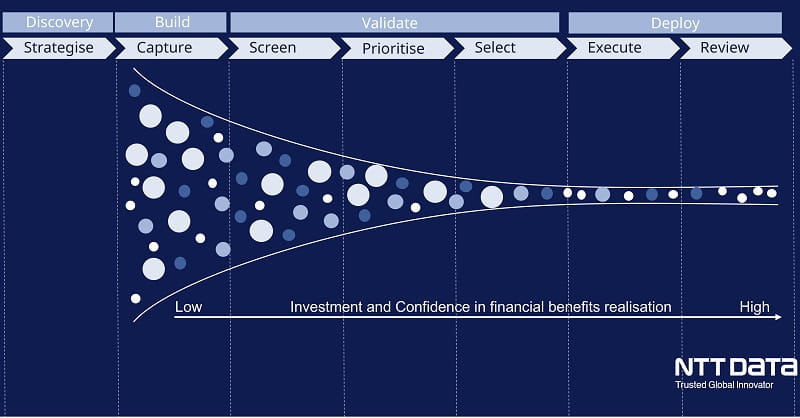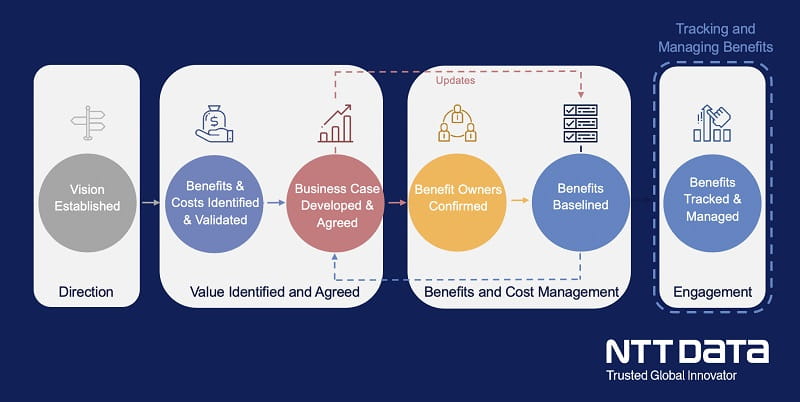In our first blog post, we explored the five fundamentals for successful change. This current period of disruption has led many businesses to become more open to change but delivering business benefits from change is hard. In this blog we discuss the selection and execution of change-based cost transformation projects.
Digital transformation is a term often used to describe change - using digital technologies to improve business processes. More often than not, multiple projects and concepts sit beneath this umbrella term, but how do you define and select the project that will have maximum impact with clear business benefits?
At NTT DATA we adopt a "funnel" approach to prioritise cost transformation projects against defined acceptance criteria. This works across both waterfall and agile methodologies. At its simplest, it consists of four stages.

1. Discovery
The discovery phase is an outward-looking period of analysing and strategizing what will make a difference to the business. What does the business need? What are the acceptance criteria for prioritisation?
Prioritisation criteria could include:
- Knowledge – ensuring that, whenever data is made available, users understand the business definitions in use and the context of intended use of the data.
- Reliability – ensuring that users understand to quality of the data they are using, warts and all. After all, data doesn’t always need to be perfect, just fit for purpose.
- Engagement – ensuring that the right stakeholders are involved in the governance processes and communication about data.
In other words, how will we know that what we deploy is going to have the biggest positive impact on the business? The discovery phase gives us the blueprint for success.
2. Build
The build phase is a period of brainstorming and idea planning.
For the best ideas, a proof of concept in the form of a minimum viable product may be built. This stage is about capturing ideas, even if the confidence that it will lead to financial benefits are still low.
Breadth of ideas should be prioritised over depth of execution at this point, giving you the information on which to validate the concepts. Getting finance onboard early is key especially if you plan to drive this through using Agile methodologies; they have to get used to ambiguity.
3. Validate
As we move through the project hopper, we score candidates against the acceptance criteria as laid out in the discovery phase and make the final decisions on selection.
Validation is where the business case rationale is built, and cost-benefit assessments are carried out and at the end of this phase we will have project teams ready to go armed with the full rationale behind why these change projects are going to give the maximum benefits to the business. If you have built an MVP it tends to become clear very quickly what the payback is but this is not always possible.
4. Deploy
The final stage is the process of executing on the project. The project team works to the validated project plan and when complete the team can measure and verify the benefits to the business. However, throughout the engagement it’s important to track and manage benefits.
Benefits realisation
One of the original reasons for failure of change projects is that they don’t deliver on the promised benefits that are defined at the outset.
Therefore, as transformational change progresses, an effective governance process needs to be in place to ensure the ongoing ownership, development and tracking of benefits. This needs to inform the business case as it is developed and agreed, and the project stakeholders – those who will benefit from the project – need to be defined and engaged at each step of the process.

Conclusion
The project hopper is a concept to help prioritise which change project will deliver tangible benefits to the business and by ensuring an effective governance process, then benefits are tracked and realised.